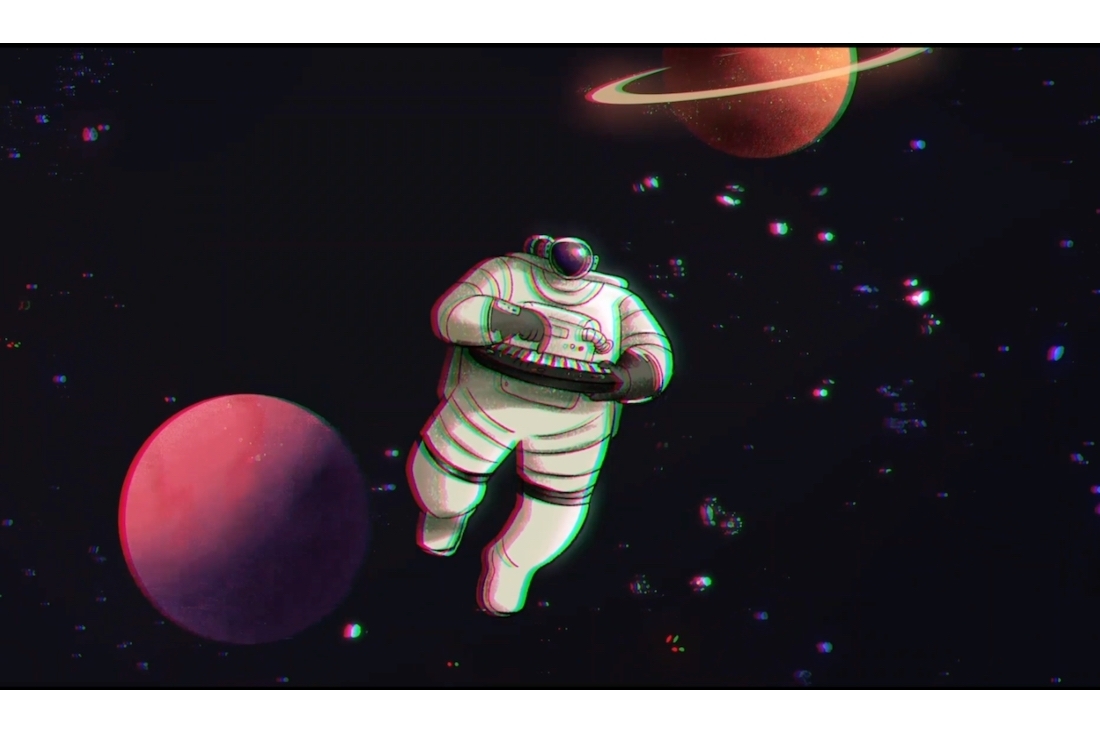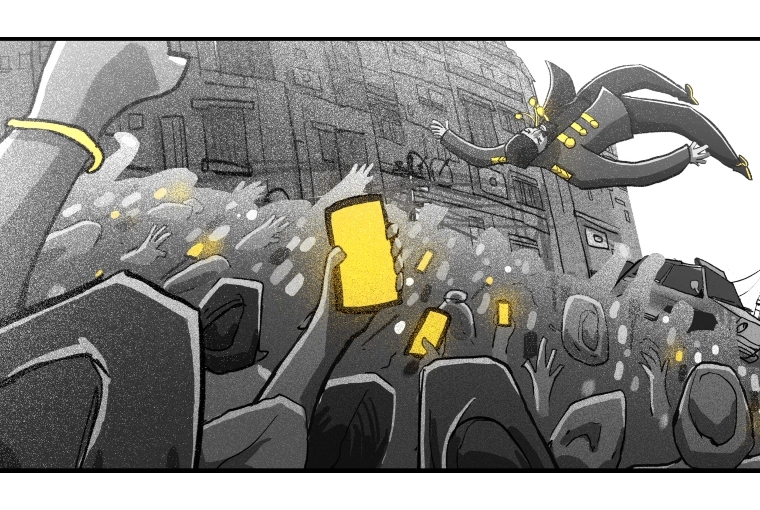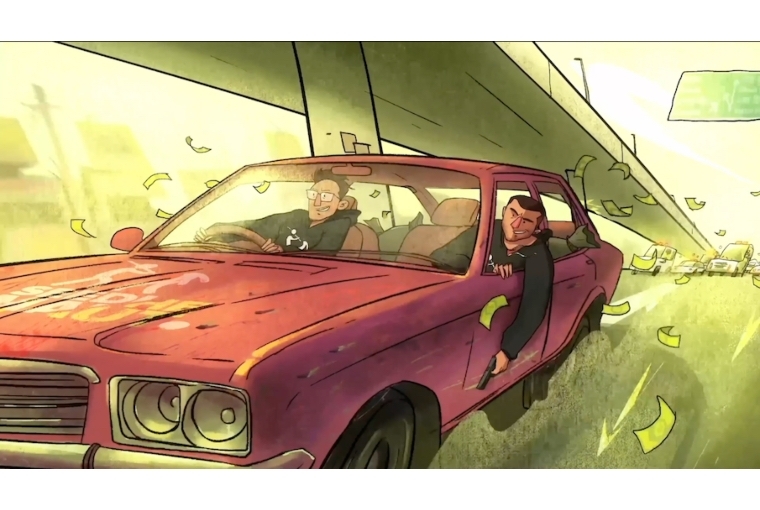

Debjyoti Saha is an exceptionally talented animator. His most recent work on the state of affairs in our country called Korona, a six-part animated series, is thought-provoking, powerful and sends chills down your spine. Every frame is so detailed and well-drawn that you are left with goosebumps. You will want to watch it again and again, and never forget.
Two of the animations have really stayed with me. One talks about how the concept of home means differently to different people. While some, who are isolated with a roof over their heads crib about power cuts and terrible connections, for many others, home is a place thousands of miles away, where they desperately want to reach, at any cost, without a penny in their pocket, a vehicle to get on or even a pair of slippers for their bleeding feet, surviving only on the hope of being at peace.
The other comments on us humans, how we trailed back and resorted to our old selves after three months of lockdown — rushed out for a jog, or a smoke, headed to work and began planning our travel destinations without a care — even as the cases surged. It marks the end of nature’s long-overdue vacation and how it is time for it to get back into the cage. What follows is a conversation with Debjyoti about his practice, where he find his stories, and more.
What were your growing-up years like?
I'm an animation filmmaker from Kolkata, currently based in Mumbai. I grew up as an introvert in the midst of a bustling family of close relatives. I was really bad at remembering the exact relationships I had with people, so I would keep only the people I trust the most around. As I grew up, I did the same with my small circle of friends. Not to say that I didn't keep good relations with everybody, but a group of close people seemed easy for me to manage, always. Being an introvert in the midst of a big family has its upsides — your intake of information revolving around people, stories and relationships are on the rise, without you having to share much of your stories/experiences. As a result, their stories became my experiences growing up. I picked up most of my drawing inspiration from my father, painting was his hobby. I started drawing quite early but I wasn't ever exceptional, and I found it easy to live with that.
The influence was always there — be it copying all illustrations from school books, bunking classes to illustrate charts and getting a thrashing thereafter, or selling off artworks to classmates for some lunch money. However, there was no serious inclination for this to become a career option later on. My Father would always say ‘your hands are quite steady, you’ll be a good doctor.’ I would have been a terrible doctor! But life leads you to a point where you start realizing for yourself and figuring out what you'd like to continue doing. So after an exceptionally mediocre board result, I got the push I needed to venture into the field of animation. Joined St. Xavier's College, Kolkata, and loved it so much that I hopped into NID for another three beautiful years of making mistakes and building my experiences off other's stories.
How and when did design become the way of life?
I might have not realized this earlier, but the influence of design and stories was always there since childhood. Sometimes I feel it's good I didn't realize it back then else I might have overanalyzed and ruined the moments of pure emotion. My understanding of design is a little different, a little more opinionated conceptually in terms of people and their stories. I feel that the fundamental design of every individual is extremely different from the other — the design of our environment we grow up in, the intricate design of relationships we have with people and objects around us everyday, shapes our distinct ideas of aesthetics and opinions. It develops our unique design principles, which is always interacting and influencing/getting influenced by several other points of view, which brings it out of it's definite (almost product-like) state and makes it a more free-flowing natural way of life. Which is the reason why design is fundamental.
Your work revolves around people and focuses on personal narratives, which come across as honest reactions to the social and political environment. Do you associate your work with a design sensibility/style? Or do you believe narrative drives style and every story should be treated differently?
Narrative drives style, and everything else that comes with it. I'm becoming a firmer believer of that as I go along. I believe that in the case of films, the story is the most important aspect, and every other aspect of it — the visual language, the design of characters and their environment, the shot breakdowns, the decisions that you take in the telling of that story — all act as visual information to take the narrative forward. Any mismatch of these aspects (unless desired as per the story) might end up like a piece of spinach stuck in your teeth at the end of a hearty meal. Many artists have a very distinct style, which immediately has a recall value to their work. However, I believe the lack of a certain design style keeps many more avenues and opportunities open for a more interactive approach towards telling the stories you want to tell in the best possible way.
Your animations around Covid have been very well appreciated on social media. They have certainly struck a chord considering the honest depictions of our society. Please tell us a little more about what informed your decisions of the direction/story you wanted to show.
I started with the Covid animations as a one-off thing, as a means of taking all the chaos and clutter around it and focus on what's more important. But then I kept building it up as weeks passed and there was one bizarre piece of news after another. Starting with the propagation of extreme fear regarding the virus, to the doctor's plight during the grand ‘Thank You’ when the nation banged their thaalis to let them know, to deep rooted racism and xenophobia which was so prevalent during these trying times. Then the biggest migrant workers issue that hadn't received its fair share of importance in the news, to the bizarre long queues outside alcohol shops the day they opened up, to the way forward and how other, much bigger problems await us in the near future.
The series is called Korona, which is pun on the pandemic and the Bengali word for ‘Don’t.' The series focuses on all the things people shouldn't be doing in the midst of a pandemic, or otherwise, and talks about how during desperate times, people become their worst selves, so much so that a pandemic doesn't seem to be a bigger problem than many of society's deep-rooted issues anymore. What better way to put the point forward than satire. Satire has this unique quality of treading dangerous territory without being overtly offensive, which helps show a truer picture of people to themselves, while they have a laugh about it. I guess people found it quite relatable because of the certain guilt that the films helped address. The intention was to urge others to do something more about it, after acknowledging it. Some did, some didn't. It's a film at the end of the day. One can watch and enjoy all they want, but what they do with what they understood from it, is completely their choice.

Animation is a very meticulous and time consuming process, with each and every frame being designed and detailed one at a time. How would you define your relationship with the medium?
Animation is an amazing teacher. It teaches you the value of time. Eventually whatever we pursue, be it Astrophysics or Culinary Arts, they end up as a venture to understand ourselves and our environment better. In the same way, Animation is a celebration of movement. Yes, it is meticulous and often a test of patience when we rush to see the end result. But the joy we get after enjoying the process and seeing drawings emote movement is inexplicable. Once you get a little taste of this magic, and the effort it took to achieve it, we value ourselves and our work a little more.
What do you think the audience wants when it comes to animation?
In theory, the audience wants to watch a film with a good story. In practice, they want to watch a film well worth their money. That depends on various tiny factors that have shaped our sense of what is 'meh, good and great' over the years. As an audience, you associate with animation only in your childhood in the form of cartoons. And it has such a domino effect while you grow up, that you end up taking that same visual language as nothing more than a laugh or a gag. The second factor is how you decide whether a film is worth your money. Would you pay to watch a series of beautiful drawings telling you what can't be told in any other medium? Or a numbing blockbuster with an army of big actors and bigger budgets? Also, The sense of magic realism has been heightened to such an extent with the help of VFX on live-action footage, that the audience has become very critical about the accuracy of frame by frame animation. Which in turn has discouraged artists and directors to turn to animation to tell their stories over the years.
But with the rise of many independent voices in modern day Indian animation, and the growing framework of digital and social media, people are becoming less afraid to make mistakes and telling their own unique stories and putting it out there for others to watch. Which is also educating the audience to accept and acknowledge the variety of content coming through, making them accepting and somewhat forgiving towards animation. So, there is hope. There is brilliant animation talent in this country in small pockets, and this is a great chance for everyone to come along and keep making their voices heard through their unique forms of storytelling, hoping that the current scenario will change soon.

What are you working on currently?
There are a bunch of projects lined up for the remainder of the year. The lockdown has surprisingly been quite rewarding in terms of work and I hope to continue with it for as long as I'd like. Just got done with a mad music video project with Prabhdeep, an Indian hip-hop artist from Delhi. So watch out for that. There is also a new short film in the works. Hope to talk about all of these projects soon.
Text Hansika Lohani Mehtani